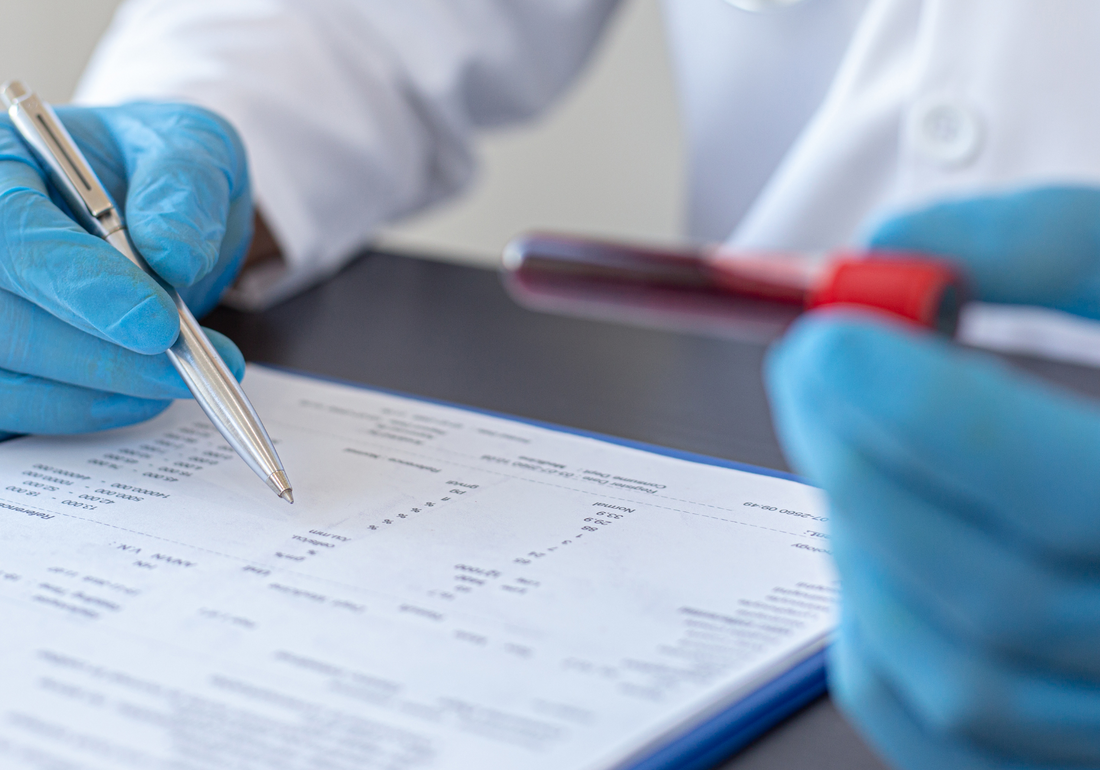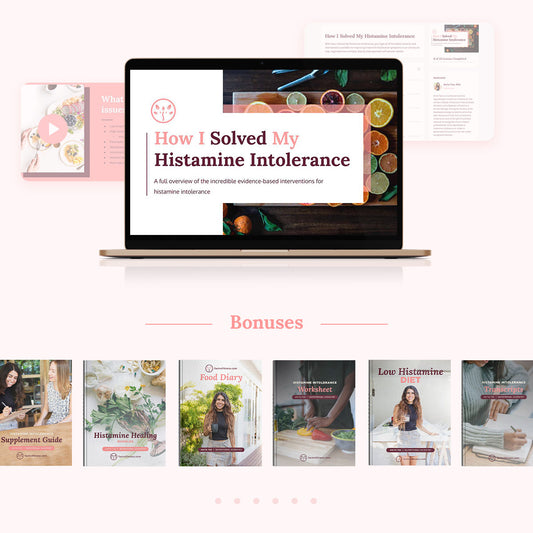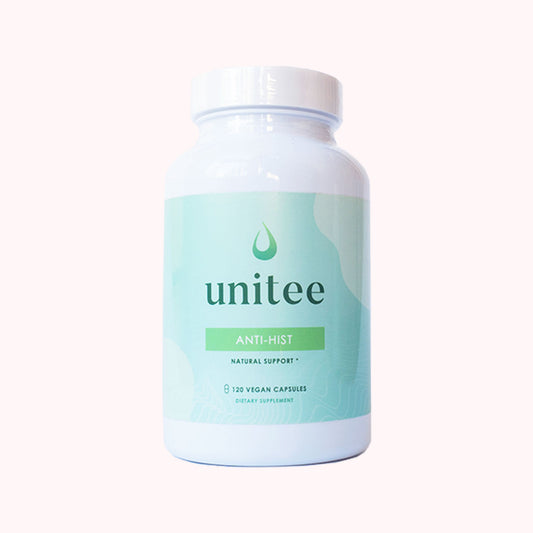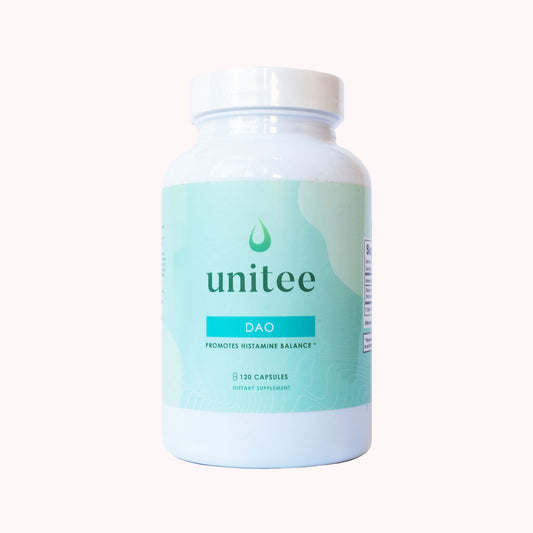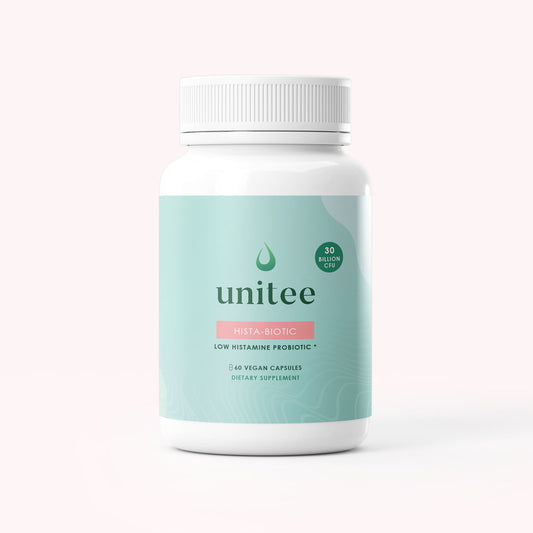Could your low histamine diet be contributing to nutrient deficiencies?
When it comes to managing histamine intolerance, surely nothing can be worse for you than eating foods packed with histamine, histamine liberators or blockers of diamine oxidase, a histamine-degrading enzyme.
Believe it or not, the only thing that might be worse than this is... not eating these foods!
Wait, what...?
Hear me out! I know you get terrible symptoms when you eat even the healthiest of high histamine foods. But, surprisingly, the effects on your health when you don’t eat them over the long term, can be just as devastating.
This might sound like I'm going mad, rest assured I'm not, let me explain... it has to do with nutrient deficiencies.
Nutrient Deficiencies and Histamine Intolerance
Unfortunately, even though you may initially feel better when you follow a restricted diet that’s low in histamine, it can have implications for your health further down the line.
By restricting the particular foods you eat too heavily, there's a good chance that you're not getting the nutrients your body needs to cope with the underlying cause of your histamine intolerance.
In addition to this, the nutrients you’re lacking could be the very nutrients your body needs to clear histamine or maintain the production of DAO.
It's interesting isn't it - the poison is often the antidote itself. You see, as a nutritional scientist specializing in histamine intolerance, of course I believe in using a low histamine diet as a tool to get better. In fact, I recommend one that I provide for free to anyone in the whole world who wants it!
However, as you will see in my free diet booklet and any of my other posts on here...the diet, like many of the other therapies we use, are all tools to reach the end goal of improving your health and eliminating your histamine intolerance.
For example, if you have an infection and a doctor prescribes you a certain medicine - that medicine can be absolutely critical in your healing journey. However, in most cases you're not expected to be on that medicine for life and, in fact, that could harm you.
The same applies to a low histamine diet. It's amazing for giving your body a break from the inflammation and irritation, relaxing your symptoms and your stress over them, and providing your body with the space it needs to heal while you implement other proven strategies for improving and eliminating histamine intolerance.
However, a low histamine diet is ultimately a restrictive diet. Staying on it for ages and ages is going to be very limiting and increases your chances of developing nutrient deficiencies - especially for those of you that have found 'safe' foods and rely repeatedly on these same foods in an attempt to feel better.
Well, this could definitely backfire and, over time, your nutrients can be all out of whack.
So, which nutrients am I talking about?
Common Nutrient Deficiencies on a Low Histamine Diet
To vitamin B or not to B
Vitamin B6 levels in those with histamine intolerance is typically quite low. Not only does this have implications on histamine intolerance itself, which we'll get to in a moment, but it has major implications on other essential pathways that your body needs as a means to detoxify histamine in the liver.
One such detoxification requires a compound called methionine. This nutrient is produced during the folic acid cycle, a multi-step process in which other nutrients are added to convert the original compound into the oh-so-important methionine. Vitamin B6 comes into play here, where it is utilised in multiple stages of this task (1).
If methionine cannot be produced effectively due to insufficient levels of vitamin B6, another compound ends up sneaking in to take its place. It’s called homocysteine, or HCY for short. It’s normal to have HCY in your body, but, it’s when the levels rise too high it becomes rather troublesome! For example, one implication of high HCY is an increased risk of cardiovascular events (2).
Another significant link between B6 and histamine intolerance, is B6’s role in supporting DAO function to break down histamine. When vitamin B6 is too low, DAO cannot be produced effectively, as B6 plays an important role in the process of DAO formation (3,4,5).
As B vitamins work together in important biochemical ways, it's best to opt for a high quality vitamin B complex to ensure you're getting your B6 fix while also balancing it with other B vitamins.
So that's vitamin B, what's next? You guessed it... vitamin C!
Seasick? Use vitamin C!
You’re likely already aware of the role that vitamin C plays in the modulation of the immune system. That’s why we tend to stock up on vitamin C supplements when it’s cold out.
But, did you know that vitamin C is also good for seasickness, or motion sickness?
It’s true... and its for this reason that there's such a strong link between seasickness and histamine. Studies have shown that those who spend a significant amount of time on the water, experience much fewer symptoms of seasickness when they take additional vitamin C.
In one particular study, published in the Journal of Vestibular Research: Equilibrium & Orientation, researchers tested the hypothesis on participants during exposure to a wave motion stimulator. The participants were divided into groups of either high dose vitamin C (2 grams) or a placebo, one hour before the exercise. Their blood levels of various markers for histamine were taken and symptoms were recorded.
After the test, those people who had taken the vitamin C has lower seasickness scores compared to those taking the placebo. What’s great about vitamin C, is that there is a low risk of side effects, even when using higher doses (6).
Vitamin C's importance has also been identified in a condition called mastocytosis (7). This is when the mast cells, cells that belong to the immune system and carry histamine, release large amounts of histamine even when it is not necessary. Vitamin C acts to inhibits the mast cells from releasing their histamines, in addition to activating histamine breakdown (8,9). Cool, right?
B, C... Z? Next up, zinc is our next nutrient. Zinc has a similar function to vitamin B6 when it comes to the production of histamine-degrading DAO.
Without enough zinc, your body simply can’t keep up with the demand of DAO it needs. It quickly becomes clear that when you have too many histamines being made, you are going to become intolerant to them without DAO to keep things in check.
Zinc deficiency has been associated with an increased risk of asthma, which is also linked to histamine reaction. Zinc supplementation is associated with the reduction in allergic asthma symptoms and the normalization of immune response (10,11).
PS - zinc also does wonders for acne and skin conditions, as well as hormonal balance. So, if any of you (or your teenagers) are suffering from skin issues, you've found an all-natural miracle worker in zinc.
Magnesium, copper and iron are also essential for the regulation of the immune system, and thus the management of histamines in your body. With this in mind, you can see why a variety in your diet is so important for aiding the relieve of your histamine intolerance symptoms. Too few foods, and you won’t have enough of these important nutrients that are intricately involved in the management of immune responses and the production, breakdown and metabolism of histamine.
Managing vs Healing Histamine Intolerance
So here's the thing....right now, if you're reading this blog, you may feel like you're just managing your histamine intolerance. In other words, doing the things that keep symptoms away without actually feeling fully healed or like you can eat what you want again.
Healing, on the other hand, is going through a series of progressive therapies with the end goal of being able to drastically improve and eliminate your histamine intolerance, so that you can tolerate a wide variety of foods without having to spend your life stressing over histamine symptoms.
Of course, the first step of both pathways involves a low histamine diet, it is very different to use it as a tool for healing vs a life-long crutch for managing symptoms. Because, to be honest, the longer histamine intolerance remains and the more it deteriorates the health of your body through inflammation, impacts on hormones, the gut, and all bodily systems, well the more damage that will be done and the sicker you will get.
Eventually, a low histamine diet itself may not be enough and you may start to find other intolerances pop up - or, you may find you develop certain hormonal imbalances or autoimmune issues that may require other treatments or medical intervention.
For this reason, finding a step-by-step method for healing histamine intolerance is essential. This is why I created the How I Solved My Histamine Intolerance course which has helped thousands of people globally to do just that.
Additionally, it's important to note that while a histamine-reduced diet is crucial to improving your histamine tolerance (12), there’s a need to do it in the most effective way, looking at the food list of more helpful foods, and being sure to take in as much of a variety of nutrients as possible. Click below to get a comprehensive low histamine diet that will ensure you're focussing on low histamine foods that are promoting overall health!
Working with a doctor or nutrition specialist is the easiest way to ensure you are consuming the right type of diet and get testing for any suspected nutrient deficiencies. They can help you to determine the specific nutrients your body is lacking, which you can then target through diet and supplementation, ensuring your body has the support it needs to beat histamine intolerance!
Additionally, check out the section of our blog which includes free low histamine recipes that can help to give you ideas of how to eat a wider variety of low histamine foods to support your current diet and health even more.
References
- Bähre H., Kaever V. (2017) Analytical Methods for the Quantification of Histamine and Histamine Metabolites. In: Hattori Y., Seifert R. (eds) Histamine and Histamine Receptors in Health and Disease. Handbook of Experimental Pharmacology, vol 241. Springer, Cham. https://link.springer.com/chapter/10.1007/164_2017_22
- Yoshikaw, T., et al. Histamine N-Methyltransferase in the Brain. Int. J. Mol. Sci. 2019, 20(3), 737. https://www.mdpi.com/1422-0067/20/3/737
- Comas-Base, O., et al. New approach for the diagnosis of histamine intolerance based on the determination of histamine and methylhistamine in urine. Journal of Pharmaceutical and Biomedical Analysis. Volume 145, 25 October 2017, Pages 379-385. https://www.sciencedirect.com/science/article/abs/pii/S0731708517306453
- Kovacova-Hanuskova, E., et al. Histamine, histamine intoxication and intolerance. Allergologia et Immunopathologia. Volume 43, Issue 5, September–October 2015, Pages 4. https://www.sciencedirect.com/science/article/pii/S0301054615000932
- Ede, G. Histamine Intolerance: why freshness matters. Journal of Evolution and Health. 2(1). 2016. Article 11. https://jevohealth.com/cgi/viewcontent.cgi?article=1054&context=journal
- Jarisch, R., et al. Impact of oral vitamin C on histamine levels and seasickness. J Vestib Res. 2014;24(4):281-8. https://www.ncbi.nlm.nih.gov/pubmed/25095772
- Hagel AF, Layritz CM, Hagel WH, Hagel HJ, Hagel E, Dauth W, et al. Intravenous infusion of ascorbic acid decreases serum histamine concentrations in patients with allergic and non-allergic diseases. Naunyn Schmiedebergs Arch Pharmacol (2013) 386(9):789–93. https://www.ncbi.nlm.nih.gov/pubmed/23666445
- Molderings GJ, Brettner S, Homann J, Afrin LB. Mast cell activation disease: a concise practical guide for diagnostic workup and therapeutic options. J Hematol Oncol (2011) 4:10. https://www.ncbi.nlm.nih.gov/pmc/articles/PMC3069946/
- Hemilia, H. The effect of vitamin C on bronchoconstriction and respiratory symptoms caused by exercise: a review and statistical analysis. Allergy, Asthma & Clinical Immunology. Volume 10, Article number: 58 (2014). https://aacijournal.biomedcentral.com/articles/10.1186/1710-1492-10-58
- P. D. Zalewski, A. Q. Truong-Tran, D. Grosser, L. Jayaram, C. Murgia, and R. E. Ruffin, “Zinc metabolism in airway epithelium and airway inflammation: basic mechanisms and clinical targets. A review,” Pharmacology & Therapeutics, vol. 105, no. 2, pp. 127–149, 2005. https://www.sciencedirect.com/science/article/pii/S0163725804001585
- K. Kabu, S. Yamasaki, D. Kamimura et al., “Zinc is required for FcεRI-mediated mast cell activation,” The Journal of Immunology, vol. 177, no. 2, pp. 1296–1305, 2006. https://www.jimmunol.org/content/177/2/1296
- Lackner, S., et al. Histamine-reduced diet and increase of serum diamine oxidase correlating to diet compliance in histamine intolerance. European Journal of Clinical Nutrition. Volume 73, pages 102–104 (2019). https://www.nature.com/articles/s41430-018-0260-5

Anita Tee
My name is Anita Tee. I'm a nutritional scientist who specializes in histamine intolerance. I hold a Master of Science in Personalized Nutrition and a Bachelor of Science in Human Biology and Psychology.
For the past ten years, I have used my experience in nutritional and medical health sciences to create a scientifically backed, natural approach to healthcare that relies 100% on evidence-based research.
As I previously suffered from - and overcame - histamine intolerance, my focus is to increase recognition and expand the available resources and protocols available for resolving this particular disorder. To date, I have helped over 4,000 individuals fully resolve or better manage their histamine intolerance symptoms.

